
Some people seem like naturals when it comes to sales. Their smooth talking and deep product knowledge entices customers and makes them feel warm and fuzzy inside.
A high performing sales person is a huge asset to a company, and they’re often paid very well as a reward!
- Maybe you want to start a new business and need to jump into the sales role to get your fledgling startup off the ground?
- Maybe you want to build a sales team to crush sales goals while you focus on your specialty?
- Or maybe you just want to get into sales as a career and need to know how to get up to speed fast?
Well, in this Process Street article we’ll cover solutions to each of these conundrums. We’ll look at:
- How Salesforce hit their sales goals
- 10 top tips the sales experts have for a beginner
- How Close.io CEO Steli Efti builds outbound sales teams
- What steps you need to take to build sales processes (with a load of premade templates to help you get started!)
“A goal properly set is halfway reached.” – Legendary sales guru, Zig Ziglar.
How the Salesforce team hits its sales goals

For inspiration, and to see what sales looks like in the wild, we’ll start off by exploring the sales processes of a few established companies.
We want to look at market leaders whose growth has been driven by effective sales teams and powerful processes. If it works for them, it could work for you!
How Salesforce works from core sales principles
Before we get into the nitty gritty, we need to look at the principles Salesforce operate by within their sales team.
David Whitford, writing for Inc, guides us through the 4 key principles which turned Salesforce into a global powerhouse with over $8 billion in revenue in 2017.
Number 1: Speak in plain language
No one wants to be hit with jargon. People don’t have lots of time and having to decipher what you’re saying is a waste of that precious time. Zig Ziglar believes that people make purchases based as much on emotion as they do on logical reasoning. So you have to craft messaging which hits to the heart of what a customer wants.
Greg Gsell, a Salesforce senior marketing manager, talks about how an internal study was turned into effective sales copy. The study found that companies who take full advantage of the Salesforce software see a 30% increase in sales.
“So take the numbers and make them into meaningful metrics. You get an extra day and a half a week if you increase your productivity by 30 percent! That’s huge! It means I’m selling all day Saturday and halfway through Sunday–but I don’t have to work on weekends.”
Simple and clear messaging helps customers see the value you’re offering.
Number 2: Take the high road
In sales you have a responsibility to provide value to the customer.
It’s very easy to make all the promises in the world to secure a sale, but if what you’ve sold them isn’t actually useful for them then you’ve created an unhappy customer.
Catering to the customer’s needs is more important than just adding figures onto your sales record. As Gsell puts it, you have to know you’re guiding the customer well.
“Internally, we have these posters: Crush Microsoft and Obliterate Oracle,” but “when you go out to your customers, you have to be careful that you’re guiding them and not just stepping on Microsoft. Even though we all want to.”
Gsell describes this customer centric approach in this video below:
Number 3: Tell stories
Creating a narrative is seen as a really useful way to sell or market in general. But Salesforce has a particular approach to spinning a narrative.
In delivering a sales call, Salesforce wants to find out its potential customer’s problems and needs. In doing so, the sales rep can then call upon an example of a previous company who had experienced a similar set of problems. In doing this, the services of Salesforce are humanized through the story of a scrappy startup or a different successful sales team.
The emphasis is not on the product, but on the results others have seen from the product. As Kardyhm Kelly, a Salesforce senior director, puts it:
“We’re not the hero in our customers’ stories. It’s how the customer succeeded, not how we saved them.”
Number 4: Teamwork makes the team work
Sales has a reputation for being super competitive. The idea of a cut throat sales environment is etched into our minds, partly down to how sales is depicted in film and television.
Salesforce, however, don’t see this as being conducive to best results. Healthy competition is a positive within a company but environments which become too aggressive can be damaging to morale and engagement.
If someone has a successful sales technique or approach it is more beneficial to the company if that person is eager to share the reasons for their successes with the rest of the team, instead of keeping it to themselves. Teamwork can go a long way in sales.
As Tony Rodoni, senior vice president of commercial and small-business sales, describes:
“We have high aspirations for ourselves, but not at each other’s expense.”
How Salesforce manages outbound sales

So we know the principles behind Salesforce’s operations, but what about the detail?
We’ll look at how Salesforce manage their outbound sales and what steps they take to structure and prioritize their actions on the day to day.
John Barrows had been training Salesforce staff on outbound prospecting and sales for over 5 years and in his article, How Salesforce Does Outbound Prospecting, he lays out the steps the team take and what motivated that approach.
The first take away is that sales shouldn’t be reduced to tricks or techniques. These can be useful to selling more or selling better but tricks are flourishes on a successful sales process, not the foundations.
Barrows splits up the outbound prospecting approach into 3 sections:
- Qualification and prioritization
- Building systems and routines
- Scaling the approach
Qualification and prioritization
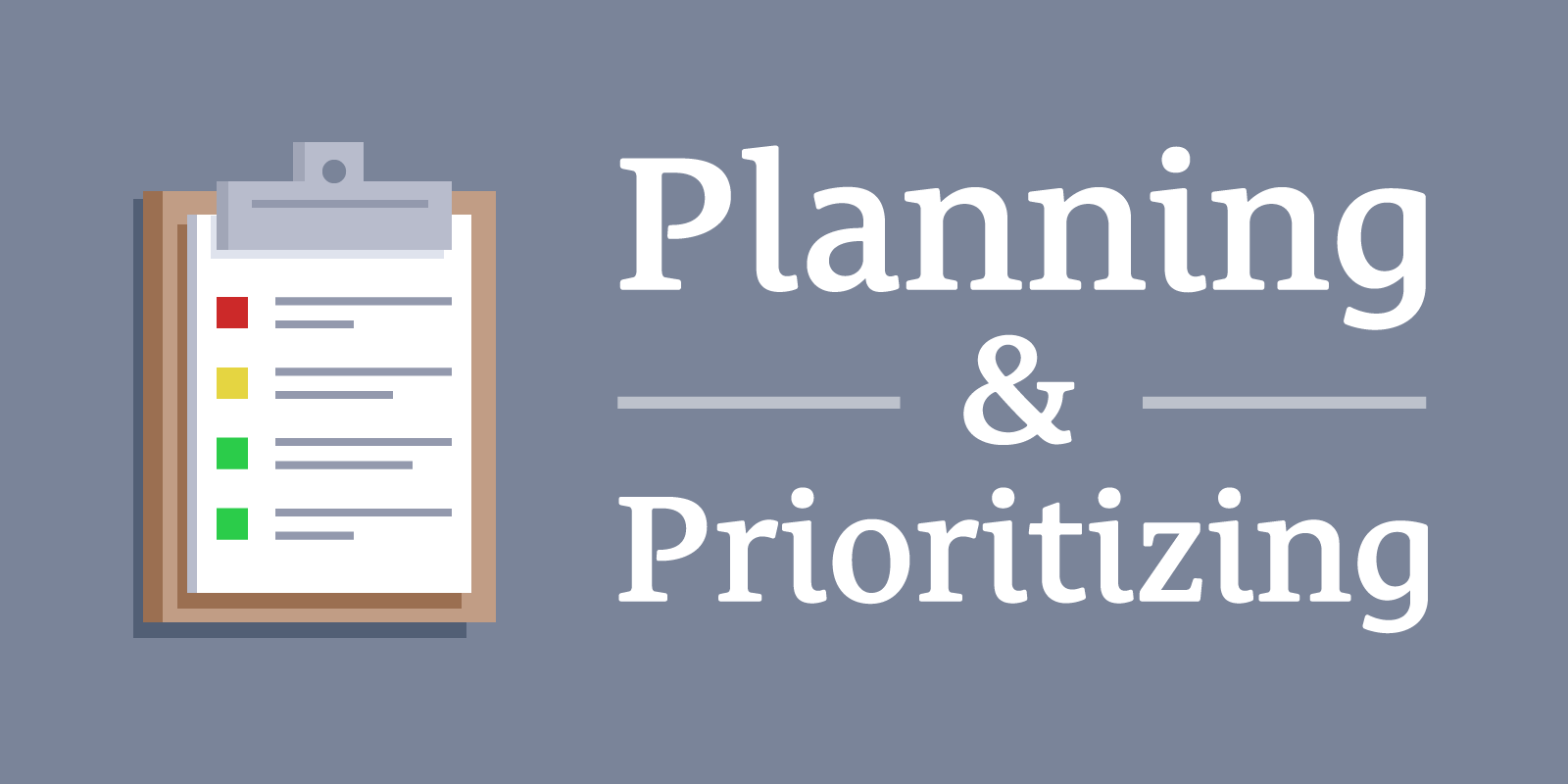
Barrows describes how prospective targets are categorized into 3 different areas: Tier 1, Tier 2, and Tier 3.
These tiers are quality based and determine the amount of time and effort which should be expended on each potential lead.
Barrows outlines two different factors to consider when prioritizing leads. He describes the typical industry approach:
The breakdown is usually based on very basic information, like industry, revenue, or number of employees.
These are the most simple metrics you can use to determine the size of the opportunity. These are important but Barrows points out that these are also limited. He encourages Salesforce reps to be more in depth with their research in order to better target their efforts:
I work with Salesforce reps to identify the additional levels of information (current solution, existing technologies, competition, social presence, and so on) that help clarify which accounts are worth spending time on. This is the foundation for time management when it comes to prospecting.
Once companies have been categorized into these different tiers we can know how we want to reach out to them and how much time should be spent on each.
Tier 1 leads take what Barrows describes as a “quality” approach. This involves taking the time to research the company and to try to gain a deep understanding of what their needs might be. Typically Salesforce will use a top-down selling approach for a quality lead. This means reaching out to executives and key decision makers directly; catching the biggest fish. For Tier 1 sales, all sales copy is customized and crafted for the customer.
Tier 2 leads take a slightly different approach. Salesforce call these “quantity”. In this approach a more standard method is created and this is tailored not for a specific individual at a particular company, but at a segment of an industry – VP of Sales for a SaaS company, for instance. Salesforce reps would send out 30-50 emails at a time while tracking the open rates and responses, looking to iterate and optimize for the next batch.
Tier 3 leads differ from both. In Barrows words:
The Tier 3 accounts are the ones we practice new approaches with.
This gives the sales reps opportunities to be creative and try new things while not damaging opportunities with higher potential leads.
Building systems and routines

Barrows looks at the systems to build through two different lenses; daily and monthly.
He recommends setting up routines for each. This standardizes your approaches month by month and day by day to iterate and optimize those repeatable processes.
Barrows’ approach is centered around having a decent number of Tier 1 accounts on the go at all times. He recommends reps have around 25 Tier 1 accounts active at any one moment. This should keep your day busy and spread your chances of closing!
He describes the daily approach reps should take with these accounts:
These are the ones we set up on all the social listening tools so that information about them comes to us. This leads to a one-hour morning routine of looking through the data feeds for triggers and sending out a few really high-quality emails every day to some key target accounts, in addition to doing some social selling and helping the reps build their brand.
Utilizing social listening tools and gathering that information in a centralized location can uncover some of the key insights which can help you close a sale. Centralizing the information can help you parse it quickly and save time per account.
This could be something simple like an RSS feed for content related to a particular company or what their executive team are tweeting about. If you see rumours that they’re gearing up for an investment round, you might have an angle you can leverage in your approach.
These efficiency savings in your research can open up more time for sending emails and making calls – the activities which will ultimately lead to more sales.
Beyond this, Barrows advocates to have a separate monthly routine going on:
In addition to the daily routine, I also recommend choosing a select group of accounts (5–10) on a monthly basis for which to develop a very specific and targeted contact strategy. It takes about two hours at the beginning of every month to research these accounts and find at least five or six different triggers or reasons related to their business that we can use to develop a contact strategy.
Laying down the research foundations for 5-10 businesses at the beginning of each month allows you to be more targeted in your daily research – knowing what to look for and what you want to expand on.
This gives us a list of 25 Tier 1 opportunities at all times with 5-10 per month receiving extra special attention. The constant monitoring and research allows the sales rep to get in synch with the needs of the lead.
Scaling the approach

There is a limited degree to which we can scale our Tier 1 companies, as they require time and effort put into each lead.
However, the Tier 2 prospects provide the opportunity to hit much larger numbers.
Instead of creating custom messaging, Salesforce sales reps will create messaging for a segment. Therefore, to follow on from the previous example, a sales rep might run a report on all the prospects in the Tier 2 category of the database for VP of Sales contacts.
With these contacts it is important to think about their needs, wants, and priorities. Then the sales rep can craft and email and send it to a segment of this segment, running A/B tests:
Once we think about what these personas’ priorities are and what we think will get their attention, we execute the contact strategy with one group, and A/B test it against another group with a different message. With this approach, we can run multiple campaigns and learn what works along the way.
This approach makes use of the limited time available to a sales rep and allows them to maximize the usefulness of that time. Through optimization efforts, each sales rep can create quality content/copy geared to their segment and turn prospects into leads en masse.
How Salesforce crafts sales emails
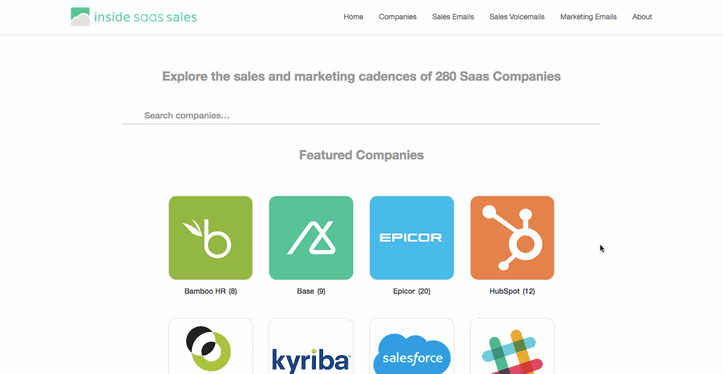 On August 25th 2017, we launched a microsite which operated as a library for 1000+ real sales emails and voicemails from top SaaS companies called Inside SaaS Sales along with PersistIQ.
On August 25th 2017, we launched a microsite which operated as a library for 1000+ real sales emails and voicemails from top SaaS companies called Inside SaaS Sales along with PersistIQ.
One of our findings from analyzing these sales cycles was that Salesforce were a good example of how to utilize both automated and manual emailing in their sales efforts.
This differs from the outbound prospecting we’ve discussed previously, as we looked at what communication a company sends to a person who has signed up for their service. This signup, theoretically, could have been a result of either outbound or inbound sales. But let’s look at how Salesforce deal with them either way.

This gif above shows two emails received from Salesforce. The bottom email is from “Your Salesforce Team” and is an automated email which does two distinct things.
This email provides a little sales copy including some percentage figures of what Salesforce customers can achieve with the software. It follows this by telling you where to go in the platform to find out more about how to best make use of Salesforce.
The automated email is a friendly welcome to the platform and helps the user know their next steps, keeping them engaged with the service.
The top email in the gif works as an effective follow-up – a kind of double tap approach – to prompt the customer into scheduling a call. The Salesforce rep has added into the email the detail that they had already tried to reach out over the phone. This small prompt may work to add a little social pressure to help encourage the lead to take the “quick 5-10 minutes” out of their day to chat with the rep.
Throughout the overall sales cadence, we received a total of 6 automated marketing emails and 4 manual sales emails. You can see all the emails gathered on the Inside SaaS Sales Salesforce section.
Here were the follow up sales emails:
Sales email 2:

Sales email 3:
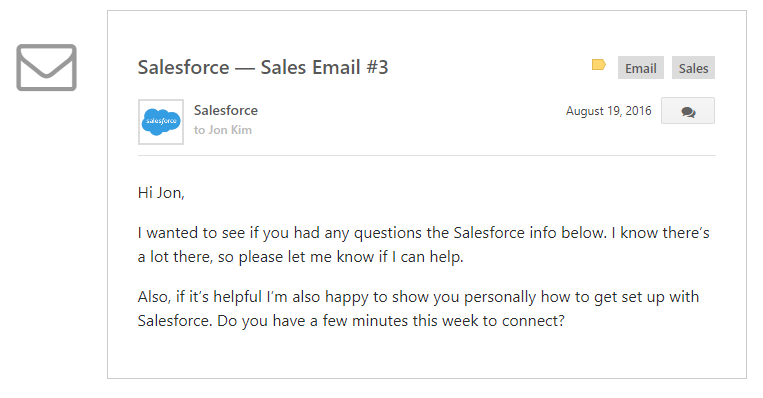
Sales email 4:
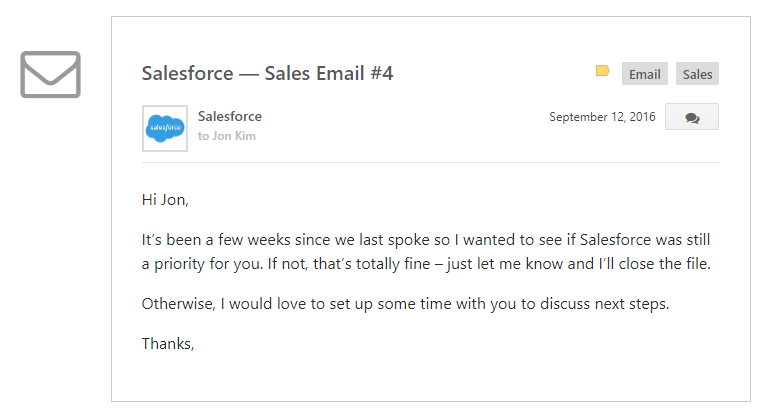
As we can see from the dates on the emails, Salesforce sustained their emailing campaign from August 15th to September 12th – almost a month of outreach. They sent a total of 10 emails in this time, split between automation and manual contact. The tone was concise, informative, and informal without being unprofessional.
10 top tips the sales experts have for a beginner
It seems that salespeople love inspirational quotes and motivational tidbits.
So, we’re going to include 10 key sales quotes here which can each teach you something small about sales.
- Most people think “selling” is the same as “talking”. But the most effective salespeople know that listening is the most important part of their job. – Roy Bartell
- You don’t close a sale; you open a relationship if you want to build a long-term, successful enterprise. – Patricia Fripp
- If you are not taking care of your customer, your competitor will. – Bob Hooey
- The best sales questions have your expertise wrapped into them. – Jill Konrath
- Make a customer, not a sale. – Katherine Barchetti
- The questions you ask are more important than the things you could ever say. – Tom Freese
- For every sale you miss because you’re too enthusiastic, you will miss a hundred because you’re not enthusiastic enough. – Zig Ziglar
- If people like you, they’ll listen to you, but if they trust you, they’ll do business with you. – Zig Ziglar
- Prospecting – Find the man with the problem. – Ben Friedman
- It’s easier to explain price once than to apologize for quality forever. – Zig Ziglar
How Close.io CEO Steli Efti builds outbound sales teams

We’ve seen how Salesforce operate, but how would we go about building a team on our own?
In a previous episode of Business Systems Explored, Steli Efti – founder and CEO of Close.io – described the steps you need to take to understand whether outbound sales is for you, and then how to set up a team to make it happen.
Do your napkin math

First of all, we need to understand whether running an outbound sales team is the right decision for your company.
Efti encourages someone who is pondering this question to sit down and do napkin math.
This napkin math is just your rough estimates of whether something is doable or not. It will be flawed math and it won’t ultimately look like this in reality, but it can help guide you as to whether you’re heading in the right path.
It essentially comes down to two sections, the first is described by Efti as being about the lifetime value of your customer:
What is the customer lifetime value of a customer? Let’s say we don’t know, let’s make a best guess. Our customers are paying us or will pay us hundred bucks a month. Let’s say they stick around forever, let’s say they stick around for two or three years.
This gives us a rough idea of the worth of one customer over time and we can extrapolate this somewhat to begin to understand our revenue as we get more customers.
Then the question becomes can we finance the acquisition of a customer through outbound means, if this is what our return is on that customer? Can we finance it?
How much does it cost to hire a salesperson? Do you have the money to pay their wages even when they’re not selling or haven’t yet made a sale? Efti makes it clear that your hit rate is going to be low – and even lower at the beginning. His rough estimation is that if your customer lifetime value is below $1/2k then outbound might not be the route for you.
But you have to do the napkin math. Sit down and work out how many customers would be needed simply to cover the sales rep, and whether this is even feasible. Then you have to see if you can start making money off it.
Worth pointing out – some companies use outbound to scale and are happy to lose money because they know they can cash in further down the line.
Understand your target customer

Efti is pretty clear that understanding your target customer is a vital part of your business as a whole, particularly in a sales capacity:
Understanding your customer and knowing how to get to them is the most important part in outbound sales. Hands down, and it’s the most overlooked part in outbound sales.
One of the first things a new sales team might do, according to Efti, is to focus tightly on the end of the funnel; work on the copy, the messaging, and the close. However, if you’re not hitting your target customer then none of those things matter because the person you contact won’t want your product anyway.
Who is it that we want to sell to and how we’re going to get get to them? If there’s not a good source of high quality leads at scale, your outbound campaign is dead.
So, how do we find these quality leads at scale?
If you’re targeting taxidermists who specialize in beavers then you’re never going to scale regardless of your data sources because there simply won’t be enough of them to constitute a customer base.
For a broader audience, you may have more luck.
Efti talks about how purchased data sets from places like Data.com can sometimes be very useful and sometimes not. It can depend on a range of factors, sometimes industry specific. Doctors move jobs or professions less frequently than VPs of Marketing so a dataset which is now a few years old might be near useless for reaching our VPs, but still might yield great results on our doctors.
It all varies.
If you can scrape information from publicly available online sources then it could benefit to employ a virtual assistant or some other cost effective route to gathering that data manually and getting a tailored dataset. However, all these costs add up – so remember to factor that in on the napkin.
Set up a consistent plan
The key message here is consistency of approach. Efti recommends a couple of key pointers in how you might conduct this approach.
If you’re doing outbound calls, go high volume. Your hit rate on outbound calling will be low. But that doesn’t matter. Watch Pursuit of Happiness the night before and get ready to make all the calls you need to make.
If you’re going email though, maybe do things differently. Don’t do too many emails per day, do high quality. Like with the Salesforce process above, if these are valuable leads then you should research and customize your approach. No one likes obviously generic emails.
Moreover, don’t expect it to work perfectly at the beginning. You need to take time to iterate your system just as you would your product. You’ll begin to understand your mistakes and your opportunities even better over time.
Don’t try to be perfect – just do it. And do it consistently.

Track your metrics: AQC
And why do we do things consistently?
Because consistency produces metrics which can be interpreted and learned from.
Efti discusses his AQC approach: Activity, Quality, and Conversion.
You want to keep track somewhere – anywhere – of these various things.
Activity may be the number of calls you make, the number of emails you send, or the number of offices you visit. This is what you do, are doing, and have done. We need to track this.
Quality could be defined by either your reach rate or your qualified rate, preferably both. How often do you actually reach the right person and are able to talk to them? A lot of time cold calling is spent reaching no one. Your qualified rate is better than this – your qualified rate is how often/how many times you reach and talk to someone who might be able to buy your product. They are your target customer and a relevant decision maker.
And conversions is fairly self explanatory. How often you make sales can then be judged against how often you close qualified leads, and what proportion of your reach were qualified leads.
You have the number of dials, you have the number of reaches and you have the number of qualified prospects. Now and only now look at conversion.
This whole process can teach you whether you are selling badly or you just have terrible prospecting. This kind of approach will help you highlight your strengths and weaknesses and allow you to iterate and improve.
Efti leaves us with one final tip. That conversion rate will increase the more you follow up.
Sales is very simple, you show up and showing up can be an email, a cold call, whatever it is. You go for the close and then you follow up and follow through, and following up and following through is the number one thing that all of your competitors won’t do. Most people you’ve ever met in your life will not do that, and if you do you’re running a race by yourself. You are going to win.
The more you follow up, the more you close. And you should Always Be Closing.

Now you’re motivated to jump into the sales world, let’s look the first steps to putting together a sales process.
What steps you need to take to build sales processes
The first step to building sales processes is to understand what areas of the role are repeatable.
If you take one of the core activities – weekly sales prospecting, for example – then you can look at how your company already does it, or how you would plan to do it.
Then, simply sketch out all the steps in the process. You can document these processes in a Process Street template really quickly and easily, giving you a base to work from as you add detail and iterate it.
If you’re building processes which you will want an existing team to use, then it’s a good idea to include them in the ideation process. This helps give the people who run the process every day a sense of ownership over it.
From here, you can analyze the different steps and identify any tasks which are missing. You could also set up integrations with third-party automation tools like Zapier to hook these processes up with a sales CRM. We’ve included a video below to show you how we connect Process Street with Close.io.
Once you have built your process, you can put it into action.
As you make use of the process each day, you will find ways to iterate and optimize the process.
If you’re looking for further inspiration, we’ve created these sales processes which outline a sales funnel from start to finish – from training, to prospecting, to closing, to reporting.
- Sales training process checklist
- Weekly sales prospecting checklist
- Cold calling checklist
- BANT sales qualification call process
- Sales presentation template
- Sales pitch planning checklist
- Closing the sale checklist
- Order processing checklist
- Monthly sales report
Here’s a sneak preview of what you can find in the Weekly sales prospecting checklist:
If you wanted to hook up this process with your Salesforce account, you could use the checklist run link feature within Process Street to build a custom button within your Salesforce platform. Check out this video below to see how you can build custom buttons in Salesforce with Process Street run links.
What processes do you use to manage your sales team and hit your sales goals? Let us know in the comments below!







 Workflows
Workflows Forms
Forms Data Sets
Data Sets Pages
Pages Process AI
Process AI Automations
Automations Analytics
Analytics Apps
Apps Integrations
Integrations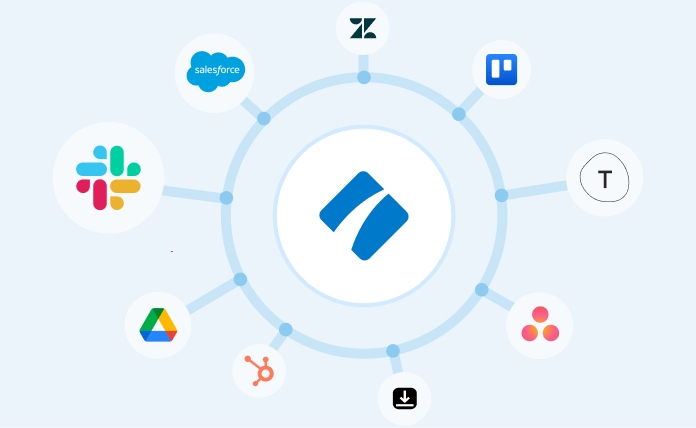
 Property management
Property management
 Human resources
Human resources
 Customer management
Customer management
 Information technology
Information technology




Adam Henshall
I manage the content for Process Street and dabble in other projects inc language exchange app Idyoma on the side. Living in Sevilla in the south of Spain, my current hobby is learning Spanish! @adam_h_h on Twitter. Subscribe to my email newsletter here on Substack: Trust The Process. Or come join the conversation on Reddit at r/ProcessManagement.